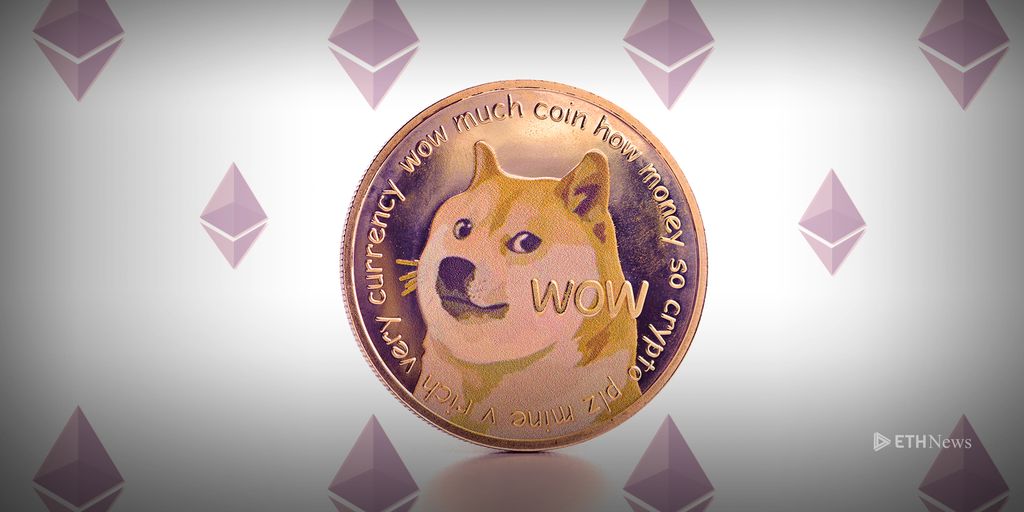The Dogethereum Revolution Will Not Be Centralized

A trio of researchers has presented a new way of bridging Dogecoin to Ethereum. Their work has broader implications for decentralization.
Since the dawn of Ethereum, developers and researchers have searched for the Shangri-La of crypto. No, not scaling the blockchain. No, not the Spankchain afterparty at Devcon. I’m talking, of course, about Dogethereum, the fabled bridge between Dogecoin and Ethereum.
Though Dogecoin began as a joke, the pursuit of a bridge between Dogecoin and Ethereum presents a legitimate technical challenge. Vitalik Buterin estimated that verifying Dogecoin via proof of work would require 370 million gas and 118 transactions.
A trio of researchers has sought to resolve that inefficiency – and not just because there’s a bounty worth more than $100,000 to find a way to securely transfer Dogecoin to the Ethereum blockchain.
In a recently released research paper titled «Retrofitting a Two-Way Peg Between Blockchains,» Jason Teutsch, founder of Truebit, an open-source community working on cryptoeconomic protocols, along with Stanford researchers Dan Boneh and Michael Straka, present their method for realizing Dogethereum. In it, they recognize they’re not the only ones working on the project. The paper works in part like a history of the project:
«The construction presented here includes many ideas that others have shared over the years which concretely combine into a cohesive tour-de-force. Both the history and technical developments of Dogethereum are integral to the foundations of blockchain, yet available literature has been scattered. This paper aims to be a self-contained exposition on the current state of affairs and a launching point for those who are interested in exploring further.»
Teutsch, Boneh, and Straka themselves lay out three contibutions: Truebit, bulletproofs, and «parametrized tokens.»
First, Truebit. Teutsch, the figure who partnered with Vitalik Buterin to write the interactive ICO white paper that Kleros put into action earlier this year, has been intrigued by the Dogethereum problem for a while. «Dogethereum is an ideal application for Truebit,» he told ETHNews. «However, that is not a coincidence. Christian Reitwiessner and I dreamed of Truebit as a way to check Dogecoin proof-of-work, a computational feat outside the reach of smart contracts.» The Truebit protocol (initially TrueBit) uses a retrofitting oracle to help smart contracts better perform computation tasks by reducing redundancies. The upshot is a more affordable method for consensus.
Second, bulletproofs. Dan Boneh is part of the Stanford Applied Crypto Group that invented the term. You’ve probably heard of bulletproofs. It’s a type of zero-knowledge proof used to scale private transactions. Just this month, Monero implemented them. Teutsch explained that, though «Dogethereum doesn’t involve zero-knowledge,» they’re still useful for it:
«Bulletproofs can drastically reduce gas costs and transactions fees by minimizing interactions with the blockchain. For our purposes, a bulletproof is a short proof that some committed data has a specific property. For example, a bulletproof might witness that the leaves of a Merkle tree form a valid proof-of-work chain.»
Finally, parametrized tokens. The envisioned system allows one to move DOGE onto the Ethereum blockchain by using a go-between, called a WOW token. The white paper explains how this «collateralized peg» works:
«1. An Operator deposits ETH into a Bridge [smart] Contract in Ethereum.
2. Any Crosser can then «lock» DOGE by sending it into the Operator’s Dogecoin address.
3. A Relayer transmits this «lock» transaction to the bridge contract which in turn mints WOW tokens, in Ethereum, to the Crosser above.
4. When a Hodler burns WOW, provably and irretrievably destroying it, (a) the Hodler receives «locked» DOGE from an Operator, and (b) the Bridge Contract refunds the Operator’s ETH deposit.»
Teutsch notes that «trustless price oracles have received considerably less attention» than either decentralized exchanges or stablecoins, event though they are «either prerequisites or consequences of such truly decentralized systems.»
The white paper doesn’t claim to be the final word on Dogethereum. Rather, it’s looking at one method of getting to a desired result. Just as there are multiple consensus models, there also can be several Dogethereum protocols. Teutsch sees several directions for further work:
«This manuscript is as much a formal call to action as it is a scientific document. Each consensus protocol will involve different techniques, and if Dogethereum is any indicator, our collective pursuit of two-way pegs may bear unexpected fruits. By reversing the direction of a two-way peg to Ethereum, we can spill tokens out of Ethereum instead of bringing new ones in. We aren’t truly living decentralized until the world’s tokens are free to migrate off of Ethereum. The era of bridge building is upon us.»
Jeff Benson is Managing Editor of ETHNews. He’s worked as a writer and editor everywhere from Sudan to Reno. He holds a bachelor’s in politics from Willamette University and a master’s in nationalism studies from University of Edinburgh. When he’s not in the newsroom, he trots the globe and writes about it. He holds a bit of value in ETH.
ETHNews is committed to its Editorial Policy
Like what you read? Follow us on Twitter @ETHNews_ to receive the latest Dogethereum, Truebit or other Ethereum ecosystem news.


